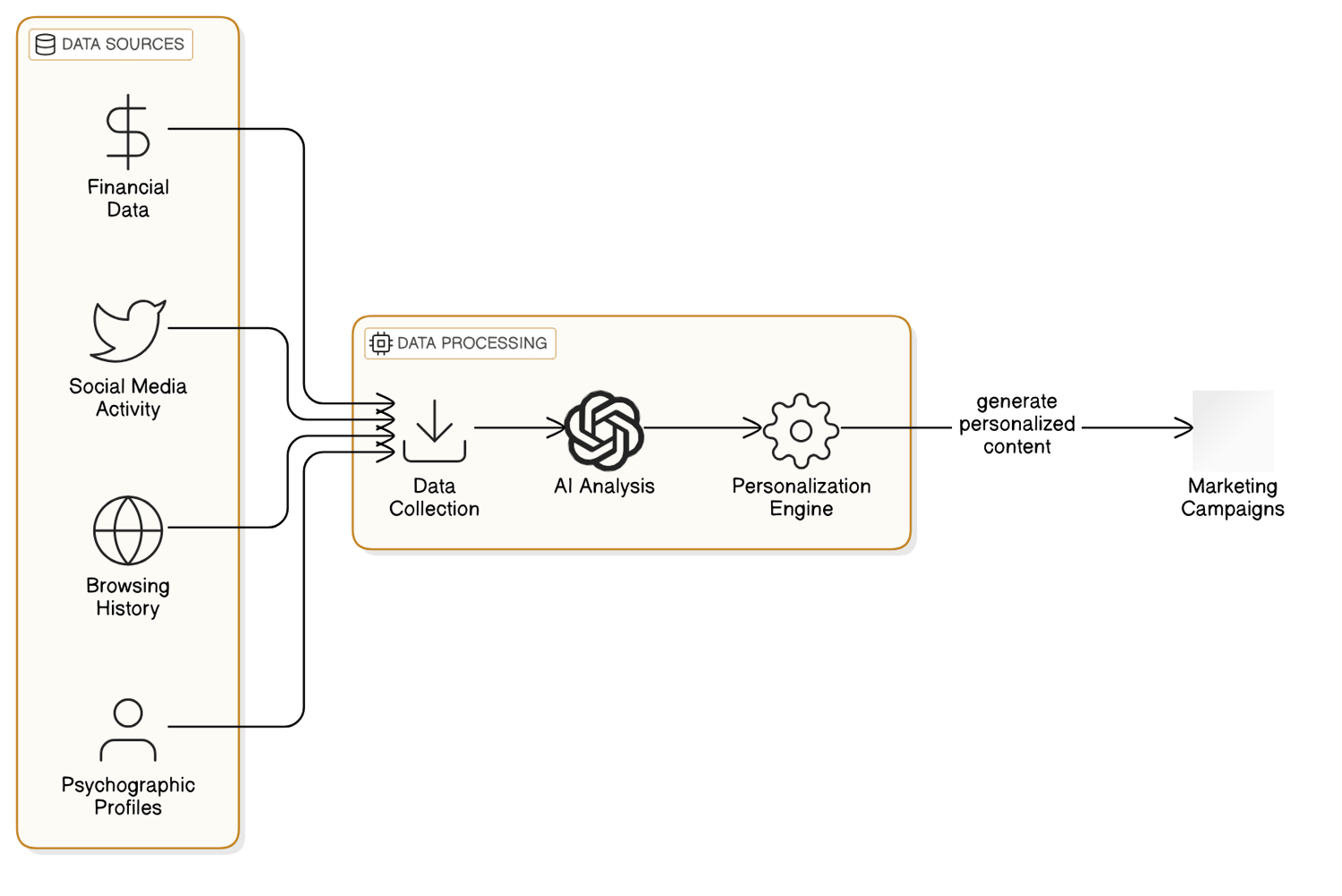Summary
This article delves into the risks associated with sports gambling in 2025, particularly focusing on predatory practices exacerbated by technology and regulation. Key Points:
- AI algorithms are increasingly used in gambling to manipulate user behavior, leading vulnerable individuals towards higher stakes and more frequent betting.
- Regulatory challenges across different jurisdictions allow unregulated operators to thrive, highlighting the need for international cooperation and innovative regulatory models.
- The rise of micro-transactions and gamification in gaming normalizes addictive behaviors among young adults, necessitating stricter regulations.
The Rising Tide of Sports Gambling: A 2025 Perspective
- Additional information :
- The rise of personalized gambling ads, fueled by AI, is raising serious concerns about problem gambling. A recent study by the University of Oxford found a correlation between increased exposure to such ads and a higher incidence of problem gambling among young adults.
- Regulatory bodies are struggling to keep pace with the rapid advancements in AI-driven targeting. The lack of consistent data collection and reporting methods makes it difficult to assess the true scale of the problem and implement effective countermeasures.
- Industry self-regulation has proven insufficient to curb manipulative practices. Greater transparency and stricter enforcement of existing data privacy regulations are urgently needed to protect vulnerable individuals.
Key Risks in the Sports Gambling Landscape: A Checklist
**Key Risk: Algorithmic Manipulation & Erosion of Fair Play** ⚠️
- **Ghost Bets**: Strategically placed, algorithm-driven wagers that distort market perceptions and manipulate outcomes for larger bets.
- **Data Poisoning**: Injection of false data into betting datasets, skewing odds and predictions.
- **Real-time Odds Manipulation**: Advanced algorithms exploit market inefficiencies beyond human capacity.
- **Detection Challenges**: Requires sophisticated anomaly detection to analyze betting patterns (volume, timing, stake correlations).
- **Mitigation Needs Collaboration** 🤝: Essential between regulators and data analysts to ensure integrity in sports gambling.
After reviewing numerous articles, we have summarized the key points as follows
- There are various services available to help individuals with drug problems.
- Sports gambling operators are now utilizing artificial intelligence to monitor and reduce problem gambling risks among users.
- Resources are available for parents and caregivers to protect young people from gambling-related harm.
- The online gambling industry has seen rapid growth, presenting both opportunities and risks for players.
- Wagering advertisements during sports broadcasts can lead to negative consequences for viewers.
- Certain gambling products, like online casinos and in-play betting, are specifically designed to be highly addictive.
Gambling can be a fun pastime for many, but it`s important to recognize the potential dangers that come with it. With the rise of technology and advertising in sports betting, we must stay informed about the risks involved and seek help if we or someone we know is struggling. It`s crucial that we support one another in making safe choices while enjoying our interests.
Extended Perspectives Comparison:| Aspect | Description | Current Trends | Expert Opinions |
|---|---|---|---|
| Sports Gambling Operators` Use of AI | AI is increasingly being used to identify and mitigate problem gambling behaviors. | Real-time data analysis for user behavior tracking. | Experts recommend transparency in AI algorithms for better accountability. |
| Protection Resources for Young People | Various resources are available to educate parents and caregivers about gambling risks. | Growth in educational programs targeting youth awareness. | Child psychologists emphasize the importance of open discussions about gambling. |
| Impact of Wagering Advertisements | Advertising during sports broadcasts can normalize gambling, leading to increased participation among viewers. | Regulations are tightening around advertising placements. | Media analysts warn that excessive exposure can desensitize audiences. |
| Addictive Nature of Certain Gambling Products | Products like online casinos and in-play betting are designed with features that encourage prolonged play. | Gamification techniques are becoming more prevalent in these platforms. | Behavioral scientists point out the need for stricter regulations on product design. |
| Challenges of Rapid Industry Growth | The booming online gambling industry presents unique challenges, including regulatory oversight and consumer protection issues. | Emerging markets see a rise in unregulated operators, posing risks to users. | Industry experts call for cohesive international regulations to protect consumers. |
Is Sports Gambling Addiction on the Rise?
What are the Emerging Trends in Predatory Gambling Practices?
- Additional information :
- A case study of a major online gambling platform revealed how algorithms identified users experiencing financial distress and then targeted them with `rescue bonuses` designed to encourage further spending.
- The use of push notifications timed to exploit psychological vulnerabilities, such as following a series of losses, is a particularly concerning trend. This manipulative tactic circumvents traditional advertising regulations.
- Experts warn that the increasing sophistication of AI-powered algorithms makes it increasingly difficult to detect and prevent these predatory practices, highlighting the need for collaborative efforts between regulators, researchers, and the industry.

 Free Images
Free ImagesFrequently Asked Questions: Understanding Sports Gambling Risks
**Q: How can advanced data analytics identify and mitigate emerging predatory practices in sports gambling? 🤔**
**A:** In 2025, operators are increasingly using AI for hyper-personalized promotions, targeting individual vulnerabilities. By employing predictive modeling rather than basic fraud detection, we analyze extensive datasets—betting history, social media activity, and psychographic profiles—to spot users at risk of problem gambling. 📊 Algorithms can flag excessive engagement with specific promotions or growing bet sizes linked to these offers before they escalate. 🚨
Delving Deeper: Advanced Questions about Responsible Gambling
**Q: What is predictive modeling in gambling?** 🤔
A: It uses AI to analyze transaction data for identifying at-risk gamblers.
**Q: How does it improve upon traditional systems?** 🔍
A: It moves beyond simple flags by integrating diverse data points like betting frequency and loss chasing.
**Q: What types of data are considered?** 📊
A: Data includes stake sizes, time spent gambling, and even social media activity, respecting ethical standards.
**Q: What are the benefits of this approach?** 🎯
A: It allows personalized interventions rather than reactive measures, enhancing responsible gambling strategies.
**Q: What is crucial for success in this model?** 💡
A: Access to comprehensive, ethically sourced data and the development of explainable AI algorithms for transparency.
How Vulnerable Are You to Sports Gambling Risks?
Data Analytics: Identifying and Avoiding Predatory Operators
In 2025, sports gambling continues to grow rapidly, making it crucial for users to identify predatory practices in the industry. This guide outlines a step-by-step process using data analytics to detect and avoid such operators.
1. **Data Collection**: Gather data from various sources related to sports gambling, including user reviews, transaction records, and operator licensing information. Utilize web scraping tools or APIs from review platforms to obtain real-time data.
2. **Data Cleaning**: Once collected, clean the data by removing duplicates, irrelevant entries, and correcting any inconsistencies. Use libraries like Pandas in Python for efficient data manipulation.
3. **Descriptive Analysis**: Conduct a descriptive analysis of the cleaned dataset to identify trends and patterns in user behavior and operator activities. Focus on metrics such as average payout rates, user complaints per operator, and frequency of promotional offers.
4. **Anomaly Detection**: Implement anomaly detection algorithms (e.g., Isolation Forest or DBSCAN) on the dataset to flag any unusual patterns that may indicate predatory practices, such as excessive bonus terms or sudden changes in payout ratios.
5. **Sentiment Analysis**: Apply sentiment analysis techniques on user reviews utilizing Natural Language Processing (NLP) tools like NLTK or SpaCy. This will help gauge overall customer satisfaction levels with specific operators while identifying recurring issues indicative of predatory behavior.
6. **Risk Scoring Model**: Develop a risk scoring model by combining key metrics derived from your analysis (e.g., complaint rates, sentiment scores). Assign weighted values to each metric based on their importance in identifying predatory practices.
7. **Visualization**: Create visualizations using tools like Tableau or Matplotlib to present your findings clearly. Highlight high-risk operators alongside comparative metrics with reputable ones so users can make informed decisions quickly.
8. **Reporting & Alerts**: Establish an automated reporting system that regularly updates users about potential risks associated with different operators based on your ongoing analysis results. Consider integrating alert systems through emails or mobile notifications for immediate awareness of new threats.
By following these steps diligently within a robust analytical framework, individuals can significantly reduce their exposure to predatory gambling operators while enhancing their overall betting experience in 2025's evolving landscape.

Protecting Yourself: Practical Steps for Safer Sports Betting
Conclusion: Navigating the Risks of Sports Gambling in 2025
Reference Articles
Drug addiction: getting help
If you have a problem with drugs, there's a wide range of services that can help.
Source: nhs.ukAI in sports gambling could open the door to predatory behavior by ...
PHOENIX – Sports gambling operators are using artificial intelligence to track and limit problem gambling exposure for their users, ...
Source: Cronkite NewsSafer Gambling
Guides, information and tools to stay safe when gambling. Information for parents and carers to keep young people and children safe from gambling.
Source: Gambling CommissionGambling Marketing Strategies and the Internet: What Do We Know? A ...
Background: The gambling industry has developed many types of gambling on Internet in recent years. Gambling is a social activity for a majority of the ...
A New Debt Epidemic: The Risky Wager Of Online Sports Betting
If you think you or someone you know might be struggling with a gambling addiction, you can access resources here. For many, the American Dream ...
Source: The Center for Public JusticeAre sports bettors looking at responsible gambling messages? ...
The broadcast of wagering advertisements during televised sports matches has been associated with various adverse outcomes. In order to counter these ...
Sports and Gambling
Learn more about the various forms of sports betting and the potential risks, recent expansions, and tips on making informed decisions about your play.
Source: Responsible Gambling CouncilFor the Gambler
Products such as online casinos and slots, fixed odds betting terminals (FOBTs) and in play sports betting are designed to be highly addictive. Such products ...
Source: GamFam


 ALL
ALL Sports Data Science
Sports Data Science
Related Discussions